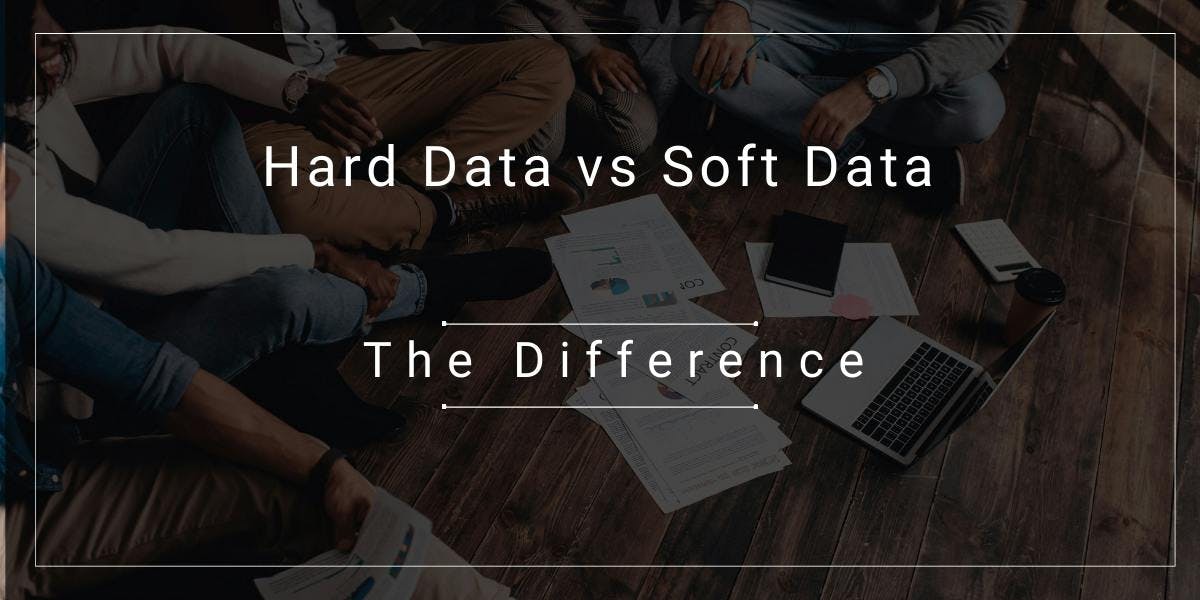Hard Data vs Soft Data: The Difference
Flipnode on May 09 2023

As a business owner or individual, you likely recognize that knowledge, information, and data are crucial for survival. For businesses, it's the carefully selected and properly extracted data that determines future growth and success.
To prevent confusion among the various types of data, it is commonly classified into two categories: hard and soft data. However, there are numerous misconceptions and myths regarding the hard data vs. soft data argument that need clarification.
This blog post covers hard and soft data, including their definitions, criteria, examples, peculiarities, and importance. You'll also learn about the key differences between the two data types and the best way to harvest them. Let's get started.
What is hard data?
The line between hard and soft data may seem unclear, but there are distinct characteristics that define hard data. Before we go into detail, let's provide a brief description of hard data.
Hard data, also referred to as factual data, is information obtained from official or organizational sources using proven and methodological approaches that are consistent and largely independent in their measurements.
To begin with, hard data is rooted in factual and measurable outcomes derived from dependable and authentic sources. This type of data is primarily retrospective, which implies that valid and verifiable results can only be obtained over time. Typically, hard data is conveyed through numerical values, tables, and graphs.
Collecting hard data necessitates a comprehensive research methodology and rigorous regulations. Two types of hard data collection methods are available: primary and secondary.
Secondary data collection
Secondary data collection involves extracting information from credible sources related to your areas of interest, such as books, newspapers, journals, and scientific reports. With many sources available, it's essential to establish strict criteria for selecting secondary data to ensure validity and reliability. These criteria may include the publication date, author credentials, source reliability, impact on your area of interest, and other relevant parameters.
While secondary data collection is less time and effort-intensive, it does not generate fresh and unique data, which limits its contribution to research expansion.
Primary data collection
Moving on to primary data collection, this method involves obtaining unique findings through your own research. Quantitative analysis and mathematical calculations are used in this data gathering process. Techniques like questionnaires with closed-ended questions, regression analysis, and correlation are employed.
The methods for collecting hard data are mainly scientific, leaving little room for bias and subjective interpretations of results. Quantitative methodology is highly standardized, which means that only indisputable facts are dealt with. This standardization makes it easier to generalize results and compare findings.
Why is hard data important?
After discussing hard data and its collection methods, let's examine its significance and functions. Hard data, which generates tangible and viable outcomes, usually covering a prolonged period, serves as a solid foundation for statistical analysis, optimization, and medium or long-term forecasting.
For example, you may wish to explore the stock market's performance over the past year to predict its future development trends. To do so, you can extract hard data from relevant platforms, looking for specific figures and statistics. This data will provide you with insight into how the stock market developed during the specified period. However, it will not explain the reason for its behavior, prompting us to refer to additional data sources, such as soft data.
What are hard data examples?
Two main categories of hard data can be distinguished based on how it was collected and the sources it was derived from. These categories are technology-generated data and data obtained through methodological research.
Technology-generated data
Increasingly, data generated by applications and technological devices are becoming the dominant type of hard data. We might even say that this is hard data in its purest form since it can easily be traced back to the source, measured, and verified. Technology-generated data can be gathered across mobile applications, phones, computers, smart meters, call records, traffic monitoring systems, bank transaction details, and many more.
Data gained via methodological research
Data obtained through scientific methodology is another example of hard data. This type of data can be collected through a variety of means, such as telephone calls, surveys, controlled experiments, and polls.
It is worth mentioning that hard data can only answer the questions related to who, when, and what, providing concrete and factual information, without any analysis or interpretation. Moreover, in quantitative research, it is essential to ensure that the sample studied is representative enough to generalize the results to a larger population.
What is soft data?
Let's explore soft data and compare it to hard data, now that we have a clear definition of the latter.
Soft data is often characterized as subjective and less precise compared to hard data. It is typically derived from semi-scientific methods that lack formal randomized sampling and conditions or are based on rumors and myths. Soft data is primarily descriptive in nature and is utilized to interpret hard data.
Soft data is qualitative and doesn't follow a standard research process, unlike hard data. Soft data includes sentiments, opinions, assumptions, interpretations, and impressions - all things that are typically attributed to humans. It's almost impossible to measure or quantify in numbers, and for this reason, soft data often lacks credibility.
However, despite the absence of scientific evidence, soft data is frequently used in conjunction with hard data to provide a complete picture. Because soft data is personal in nature, it allows businesses to gain a deeper understanding of their customers' motivations, needs, reactions, and actions. This, in turn, contributes to developing an optimal strategy on how to engage with clients and meet their expectations. Therefore, in conjunction with hard data, soft data plays a critical role in strategic planning.
What are soft data examples?
Soft data can be gathered using similar methods to those used for hard data but with some differences. Specifically, there are two main categories of soft data based on their sources and collection methods: data obtained through focus group studies and data generated online.
Soft data gathered via focus group studies and interviews
Soft data collection methods often involve techniques such as interviews and focus groups, similar to the methods used to collect hard data via methodological analysis. However, the key difference is in the type of information collected. Soft data relies on open-ended questions and aims to gather subjective information such as opinions, ideas, sentiments, experiences, and other non-factual data.
As a result of its subjective nature, soft data cannot be quantified or generalized and is not considered representative of a larger population.
Online-generated soft data
Soft data generated online refers to user-generated content, such as feedback, product reviews, and customer satisfaction surveys, that are commonly found on websites and social media platforms. When combined with sentiment analysis, this data can provide valuable insights into customer preferences and needs.
Hard data vs. soft data: The difference explained
We can differentiate between hard data and soft data based on five essential parameters that define the type of data being analyzed. These parameters include research questions, the type of information collected, sources of data, generalization capacity, and application. Now, let's delve into a more detailed comparison between hard data and soft data.
Research questions
As previously mentioned, a fundamental contrast between soft and hard data pertains to the types of questions posed. Hard data involves closed-ended questions that demand precise and verifiable responses, whereas soft data centers around the underlying rationales and extensive justifications for the preceding inquiries.
Type of the information gathered
As previously mentioned, the type of questions asked determines the data collected during a study. With hard data, the information is factual and can be scientifically and mathematically verified and measured. In contrast, soft data deals with subjective matters such as opinions, sentiments, and interpretations.
Sources
Hard data is usually generated by technology, such as applications and technological devices, and collected through quantitative research methods. Conversely, soft data is acquired through qualitative analysis or sourced from online platforms like customer feedback, reviews, polls, and others.
Generalization capacity
Proper research methods ensure that the conclusions and findings obtained from hard data can be generalized and considered somewhat representative. On the other hand, since soft data often comprises personal opinions and sentiments, it is difficult to generalize.
Application
Based on the reasons mentioned earlier, hard and soft data have different purposes. Hard data, relying on numerical figures and mathematical computations, can be used for precise statistical analysis, but it is inadequate in explaining the underlying causes and motivations behind specific events or facts. Therefore, soft data is necessary to conduct an in-depth contextual analysis and provide answers to the question of why.
Automating data gathering with web scraping
As previously mentioned, a significant amount of hard and soft data is generated through technology and online sources. While traditional scientific research methods may not always be practical for business purposes, web data provides a valuable resource that is accessible to all.
However, the sheer volume and diversity of hard and soft data available on the web can be overwhelming and challenging to manage, let alone collect and analyze. In such cases, automated data collection, also known as web scraping, offers a solution.
Web scraping tools can effectively combine hard and soft data streams, allowing businesses to create a comprehensive overview and make informed decisions.
Conclusion
The combination of hard and soft data is crucial in business data analysis as they complement each other perfectly. Hard data, based on accurate mathematics and calculations, provides a reliable foundation for statistical analysis and forecasting, while soft data, with a human touch, serves as a common thread between companies and their customers. It offers valuable insights into customer behavior and motivation, enabling businesses to develop commercial strategies that benefit both themselves and their clients



